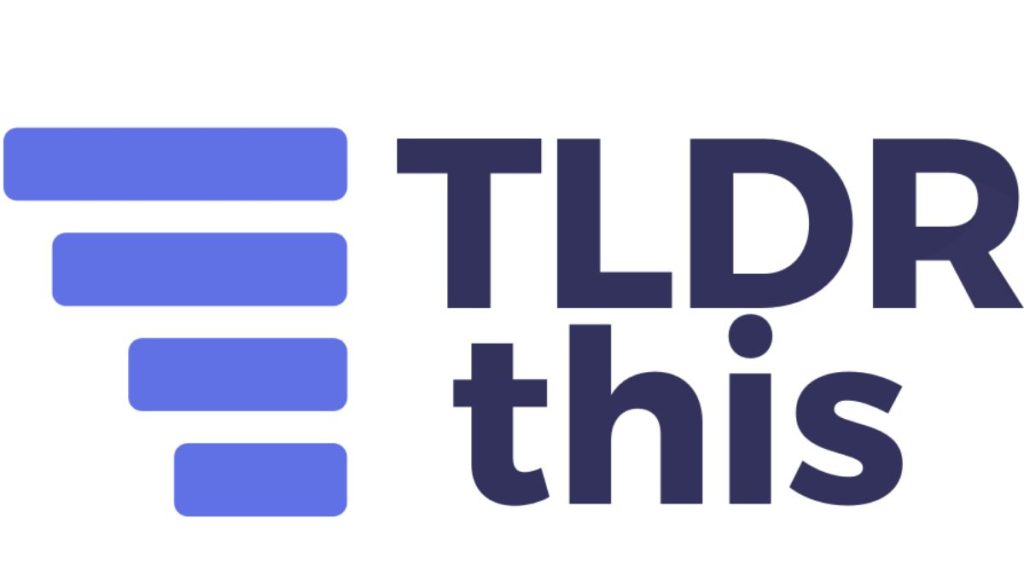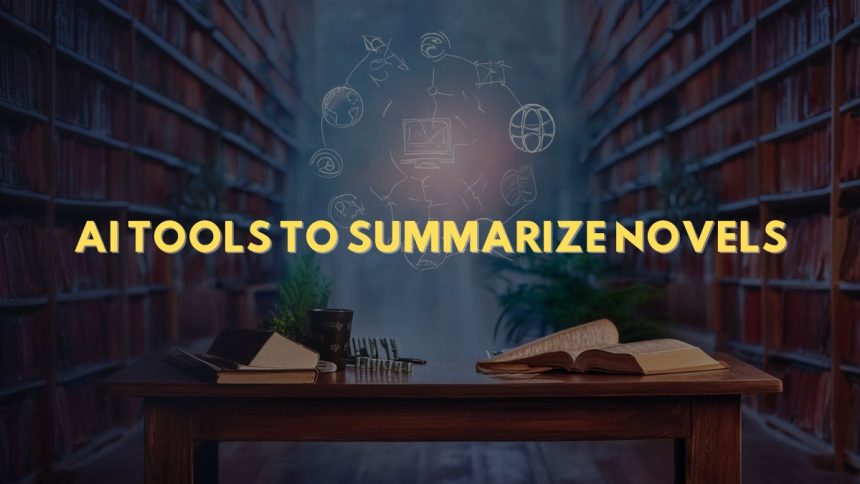Introduction
In the ever-evolving landscape of artificial intelligence, AI summarization tools have emerged as essential resources for distilling complex texts into concise, readable formats. These tools leverage advanced algorithms to process and summarize lengthy novels, making it easier for readers to grasp the main ideas without wading through hundreds of pages. The relevance of summarizing novels extends to various fields, including education, research, and casual reading. The benefits of using AI tools for summarization are numerous, from saving time to enhancing productivity.
Top AI Tools to Summarize Novels
Overview of Criteria for Selection
Selecting the top AI tools for summarizing novels involves evaluating various criteria such as accuracy, ease of use, features, pricing, and user feedback. The following tools have been chosen based on their performance in these areas.
Tool 1: OpenAI GPT-4

Introduction and Features
OpenAI GPT-4 is a state-of-the-art language model that excels in natural language processing tasks, including summarization. It can generate coherent and contextually relevant summaries by understanding the nuances of the text.
Pros and Cons
Pros:
- High accuracy
- Contextual understanding
- Versatile applications
Cons:
- Requires technical knowledge
- Can be resource-intensive
User Guide and Tips
To use GPT-4 for summarizing novels, input the text into the model through a user-friendly interface or API. Fine-tuning the model on specific texts can enhance accuracy. Experiment with different prompts to achieve the best summaries.
Tool 2: QuillBot

Introduction and Features
QuillBot is known for its robust paraphrasing capabilities and now includes summarization features. It uses advanced algorithms to create concise summaries while retaining the original meaning.
Pros and Cons
Pros:
- User-friendly interface
- Quick processing
- High-quality summaries
Cons:
- Limited free version
- May struggle with highly complex texts
User Guide and Tips
Simply paste the novel’s text into QuillBot’s summarization tool and choose the summary length. Adjust the settings to refine the output, ensuring it meets your requirements.
Tool 3: SMMRY

Introduction and Features
SMMRY is a dedicated summarization tool designed to simplify the text by focusing on key sentences. It strips away extraneous information to provide a clear and concise summary.
Pros and Cons
Pros:
- Easy to use
- Fast processing
- Free to use
Cons:
- Limited customization
- May miss nuanced details
User Guide and Tips
Upload the novel’s text or paste the URL into SMMRY. Adjust settings like summary length and focus to tailor the output. This tool is ideal for quick, straightforward summaries.
Tool 4: SummarizeBot

Introduction and Features
SummarizeBot leverages AI and blockchain technology to provide summaries for various types of content, including novels. It supports multiple languages and formats.
Pros and Cons
Pros:
- Multi-language support
- Handles various formats
- Integrates with other platforms
Cons:
- Requires internet connection
- Can be slow for large texts
User Guide and Tips
Upload the text or provide a link to the novel on SummarizeBot’s platform. Utilize its settings to choose the desired length and focus of the summary.
Tool 5: Resoomer

Introduction and Features
Resoomer is tailored for academic and professional use, providing detailed summaries that capture the essence of the text. It’s particularly useful for dense and complex novels.
Pros and Cons
Pros:
- Detailed summaries
- Academic focus
- Customizable
Cons:
- Limited free features
- May be too detailed for casual use
User Guide and Tips
Input the text into Resoomer and select the type of summary you need. Adjust the parameters to ensure the summary aligns with your needs, whether for study or review.
Also Read: Are AI Trading Bots Legit?
Tool 6: Scholarcy

Introduction and Features
Scholarcy is designed for academic texts, making it a great tool for summarizing novels with complex narratives and themes. It generates summaries, extracts key points, and highlights important information.
Pros and Cons
Pros:
- Extracts key points
- Highlighting features
- Suitable for complex texts
Cons:
- Primarily academic focus
- May require a subscription
User Guide and Tips
Upload the novel to Scholarcy, and it will automatically generate a summary and highlight key points. Use the customization options to tailor the output to your needs.
Tool 7: SAS Writing Reviser

Introduction and Features
SAS Writing Reviser helps improve writing by providing revisions and summaries. It’s a tool designed for educational purposes, helping users refine their understanding of texts.
Pros and Cons
Pros:
- Educational focus
- Improves writing skills
- Provides detailed feedback
Cons:
- Limited to educational use
- May not be suitable for all types of novels
User Guide and Tips
Input the novel’s text into the Writing Reviser. Review the suggested revisions and summaries to enhance understanding and improve the text’s clarity.
Tool 8: Text Compactor

Introduction and Features
Text Compactor is a simple tool that allows users to manually adjust the length of the summary. It’s straightforward and effective for quick summaries.
Pros and Cons
Pros:
- Simple to use
- Manual adjustment
- Free tool
Cons:
- Lacks advanced features
- May miss nuanced details
User Guide and Tips
Paste the text into Text Compactor and use the slider to determine the summary length. This tool is ideal for those who need quick and easy summaries.
Tool 9: TLDR This

Introduction and Features
TLDR This focuses on creating concise summaries of long articles and texts, including novels. It’s designed to save time by distilling content to its essentials.
Pros and Cons
Pros:
- Time-saving
- User-friendly
- Effective for various texts
Cons:
- Limited customization
- May oversimplify complex texts
User Guide and Tips
Paste the novel’s text into TLDR This and let the tool generate a summary. Adjust the settings to refine the output as needed.
Tool 10: IntelliPPT

Introduction and Features
IntelliPPT uses AI to create presentations and summaries from lengthy texts. It’s particularly useful for creating visual summaries and presentations from novels.
Pros and Cons
Pros:
- Visual summaries
- Multi-purpose
- Easy to use
Cons:
- Requires internet connection
- Limited to presentation format
User Guide and Tips
Upload the novel’s text to IntelliPPT and choose the summary or presentation format. Customize the visual elements to create engaging summaries.
Comparative Analysis
Features Comparison
Each tool offers unique features, from visual summaries to academic-focused highlights. OpenAI GPT-4 excels in contextual understanding, while tools like IntelliPPT provide visual presentations.
Performance Comparison
Performance varies with the complexity of the text. Tools like OpenAI GPT-4 and Scholarcy handle complex narratives well, whereas simpler tools like Text Compactor are suited for straightforward summaries.
Pricing Comparison
Pricing ranges from free tools like SMMRY and Text Compactor to subscription-based services like Scholarcy and OpenAI GPT-4. Choosing the right tool depends on your budget and needs.
User-Friendliness Comparison
User-friendliness is crucial for accessibility. Tools like QuillBot and TLDR This offer intuitive interfaces, making them accessible to a broader audience.
Benefits of Using AI Tools for Summarization
Time-Saving
AI tools significantly reduce the time required to summarize lengthy novels, enabling users to focus on other tasks.
Consistency in Summaries
AI-generated summaries maintain consistency in tone and style, which can be challenging for human summarizers over long texts.
Enhanced Productivity
By automating the summarization process, AI tools enhance productivity, allowing users to efficiently handle multiple texts.
Challenges and Limitations
Accuracy Issues
AI tools can sometimes produce inaccurate summaries, especially with complex narratives and nuanced texts.
Contextual Understanding Limitations
While AI has advanced, it still struggles with deep contextual understanding, which can affect the quality of summaries.
Dependency on Technology
Reliance on AI tools can create dependency, potentially diminishing critical reading and summarization skills.
Future Prospects of AI Summarization Tools
Expected Advancements
Future advancements may include improved contextual understanding, multilingual support, and integration with other AI tools.
Potential Impact on Literature and Education
AI summarization tools could revolutionize education by making large volumes of literature more accessible and easier to understand.
Innovations on the Horizon
Innovations such as enhanced natural language understanding and more interactive AI tools are expected, providing even better summarization capabilities.
Conclusion
AI tools for summarizing novels offer significant benefits, from saving time to enhancing productivity. While challenges remain, advancements in AI promise to address these issues, making these tools increasingly valuable for readers, students, and professionals alike.
What are AI summarization tools?
AI summarization tools use artificial intelligence to distill lengthy texts into concise summaries, preserving the main ideas and themes
Can AI tools replace human summarizers?
AI tools analyze the text, identify key points, and generate summaries by processing natural language and context.
Are AI summarization tools accurate?
Top tools include OpenAI GPT-4, QuillBot, SMMRY, SummarizeBot, and Scholarcy, each offering unique features and benefits.
Can AI tools replace human summarizers?
Consider factors such as accuracy, ease of use, features, pricing, and user feedback to choose the right tool for your needs.
How to choose the right AI summarization tool?
Consider factors such as accuracy, ease of use, features, pricing, and user feedback to choose the right tool for your needs.
Are there any free AI summarization tools?
Yes, tools like SMMRY, Text Compactor, and TLDR This offer free summarization services.
How to improve the accuracy of AI-generated summaries?
Fine-tuning the AI model on specific texts and using tools that allow customization can improve summary accuracy.
What are the limitations of AI summarization tools?
Limitations include accuracy issues, contextual understanding challenges, and potential dependency on technology.
How will AI summarization tools evolve in the future?
Future developments may include better contextual understanding, multilingual support, and more interactive features, enhancing the utility of AI summarization tools.
What are the best AI tools for summarizing novels?
Top tools include OpenAI GPT-4, QuillBot, SMMRY, SummarizeBot, and Scholarcy, each offering unique features and benefits.
